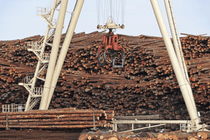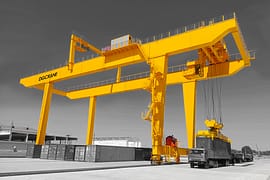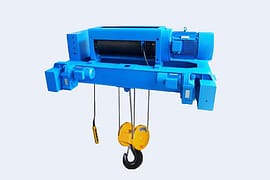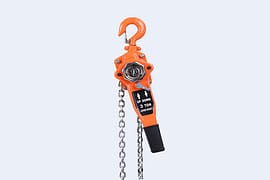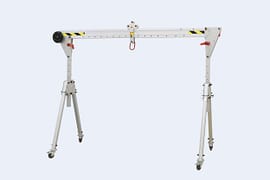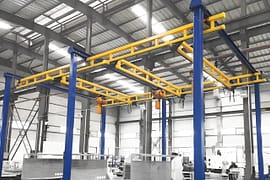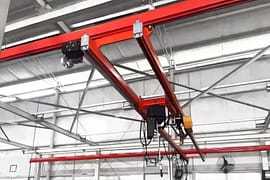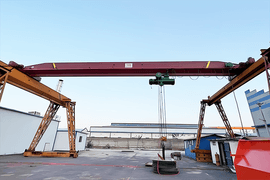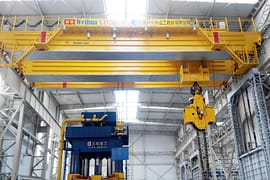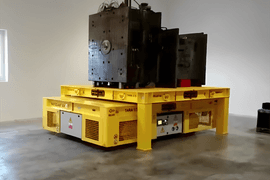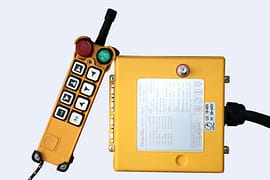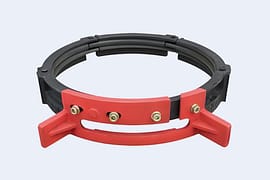The New Major Changes On Wire-rope Slings OSHA Standards
New OSHA standards have improved the regulations for slings. This new revision to the regulations requires that all slings regardless of the material require permanently affixed identification tags. This revision is part of the Standards Improvement Project Phase III. This project is to improve and streamline OSHA Standards. There are so many standards out there that the rules are so confusing, or duplicate what has already been said somewhere else and even written a different way causing much inconsistency. Many regulations are even outdated and should not apply in today's world. This improvement project will help employers to understand the regulations better. Through better understanding employers will work safer, and be in compliance. After reading the revised regulations I think they did an excellent job at rewording much of the regulations but they did a poor job at duplicating the same message in every section. Every sections still tells you that you have to have a capacity label on anything. I would think it would be easier to read if they had a section for all lifting equipment that stated what is required for all devices regardless of what they are made of. This would save a lot of time reading the same thing over and over again every time you come to a different section.
There are several new changes to sling capacity labels and shackle markings that took effect on July 8th 2011. Previously many slings had a load capacity chart if it was a synthetic sling, or if it was a wire rope sling it had no rated capacity at all.
The new major changes are as follows….
• Remove load capacity tables for slings that were in the previous OSHA standards
• Sling Markings- Employers now must use only slings with permanently affixed identification markings that show the maximum load capacity for each sling
• Shackle Markings- Required to have rated capacity label on shackle
Much of the original regulations have stayed the same but they have also been reworded so it is easier to understand. I have the entire set of regulations that have been revised. I separated them based on what the regulations were about and compiled them together for easier reading.
• Employers must not load a sling in excess of its recommended safe working load as prescribed by the sling manufacturer on the identification markings permanently affixed to the sling.
• Employers must not use slings without affixed and legible identification markings.
Alloy chain slings also have their own specific regulations…
• Employers must permanently remove an alloy steel-chain slings from service if it is heated above 1000 degrees F. When exposed to service temperatures in excess of 600 degrees F, employers must reduce the maximum working-load limits permitted by the chain manufacturer in accordance with the chain or sling manufacturer's recommendations.
• Effect of wear. If the chain size at any point of the link is less than that stated in Table N–184–1, the employer must remove the chain from service.
• Employers must ensure that chain and chain slings:
• Have permanently affixed and legible identification markings as prescribed by the manufacturer that indicate the recommended safe working load for the type(s) of hitch(es) used, the angle upon which it is based, and the number of legs if more than one;
• Not be loaded in excess of its recommended safe working load as prescribed on the identification markings by the manufacturer; and
• Not be used without affixed and legible identification markings.
• Employers must note interlink wear, not accompanied by stretch in excess of 5 percent, and remove the chain from service when maximum allowable wear at any point of link, as indicated in Table G–2 in § 1915.118, has been reached.
Wire rope slings
Wire rope slings have the most significant change in the entire revisal. Prior to this wire rope slings did not require a capacity label. Here are the revised regulations for wire rope slings.
• Wire-rope slings—(1) Sling use. Employers must use only wire-rope slings that have permanently affixed and legible identification markings as prescribed by the manufacturer, and that indicate the recommended safe working load for the type(s) of hitch(es) used, the angle upon which it is based, and the number of legs if more than one.
• Employers must ensure that wire rope and wire-rope slings:
• Have permanently affixed and legible identification markings as prescribed by the manufacturer that indicate the recommended safe working load for the type(s) of hitch(es) used, the angle upon which it is based, and the number of legs if more than one;
• Not be loaded in excess of its recommended safe working load as prescribed on the identification markings by the manufacturer;
• Not be used without affixed and legible identification markings.
• When U-bolt wire rope clips are used to form eyes, employers must use Table G–1 in § 1915.118 to determine the number and spacing of clips.
• Employers must apply the U-bolt so that the ‘‘U'' section is in contact with the dead end of the rope.
You never see natural or synthetic fiber-rope slings used today in the crane industry. There still are regulations for them since you may see them used in manual lift with shackle blocks.
• Natural and synthetic fiber-rope slings— Sling use. Employers must use natural and synthetic fiber-rope slings that have permanently affixed and legible identification markings stating the rated capacity for the type(s) of hitch(es) used and the angle upon which it is based, type of fiber material, and the number of legs if more than one.
§ 1915.112 Ropes, chains, and slings.
• Manila rope and manila-rope slings. Employers must ensure that manila rope and manila-rope slings: Have permanently affixed and legible identification markings as
prescribed by the manufacturer that indicate the recommended safe working load for the type(s) of hitch(es) used, the angle upon which it is based, and the number of legs if more than one; Not be loaded in excess of its recommended safe working load as prescribed on the identification markings by the manufacturer; and Not be used without affixed and legible identification markings as required by paragraph (a)(1) of this section.
Shackles and hooks get overlooked more than any other lifting device or rigging attachment. Shackles and hooks still have strict regulations in place to keep workers safe and prevent any accidents. Below is the rewording of the up to date regulations 1915.13 Shackles and Hooks.
• Shackles. Employers must ensure that shackles:
• Have permanently affixed and legible identification markings as prescribed by the manufacturer that indicate the recommended safe working load;
• Not be loaded in excess of its recommended safe working load as prescribed on the identification markings by the manufacturer; and
• Not be used without affixed and legible identification markings.
The last updates the regulations received were for the general rigging equipment for material handling. This is for any piece of rigging to ensure that all below the hook devices and any material handling equipment not covered in the previous regulations will be covered here in this last set of regulations. The regulation below is the 1926.251 rigging equipment for material handling.
• Employers must ensure that rigging equipment:
• Has permanently affixed and legible identification markings as prescribed by the manufacturer that indicate the recommended safe working load;
• Not be loaded in excess of its recommended safe working load as prescribed on the identification markings by the manufacturer;
• Not be used without affixed, legible identification markings.
• Employers must not use alloy steel-chain slings with loads in excess of the rated capacities (i.e., working load limits) indicated on the sling by permanently affixed and legible identification markings prescribed by the manufacturer.
• Employers must not use improved plow-steel wire rope and wire-rope slings with loads in excess of the rated capacities (i.e., working load limits) indicated on the sling by permanently affixed and legible identification markings prescribed by the manufacturer.
• Wire rope slings shall have permanently affixed, legible identification markings stating size, rated capacity for the type(s) of hitch(es) used and the angle upon which it is based, and the number of legs if more than one.
• Employers must not use natural and synthetic-fiber rope slings with loads in excess of the rated capacities (i.e., working load limits) indicated on the sling by permanently affixed and legible identification markings prescribed by the manufacturer.
• Employers must use natural- and synthetic-fiber rope slings that have permanently affixed and legible identification markings that state the rated capacity for the type(s) of hitch(es) used and the angle upon which it is based, type of fiber material, and the number of legs if more than one.
• Employers must not use shackle with loads in excess of the rated capacities (i.e., working load limits) indicated on the shackle by permanently affixed and legible identification markings prescribed by the manufacturer.
Below the hook devices are the most overlooked part of any inspection on a crane, especially when they are not stored on the crane itself. What you have read are all of the new regulations and the revised wording of the OSHA regulations on slings. It is very important to understand what codes your equipment fall under. If you are unsure contact your service provider and they will go over with you any regulations that you would like clarification on.
It is vital to stay up to date with the changes that occur every year. Keeping up to date is very hard and can be time consuming especially when you have other task that are not crane related. This is why it is beneficial for any company to have a inspection outsourced to professionals who inspect cranes and below the hook devices on a daily basis. When looking for a crane company to service your cranes, pick one that has an extensive training program for their technicians and inspectors so that you can be assured that your getting an accurate inspection that will include covering any new codes that have come out for the new year.









